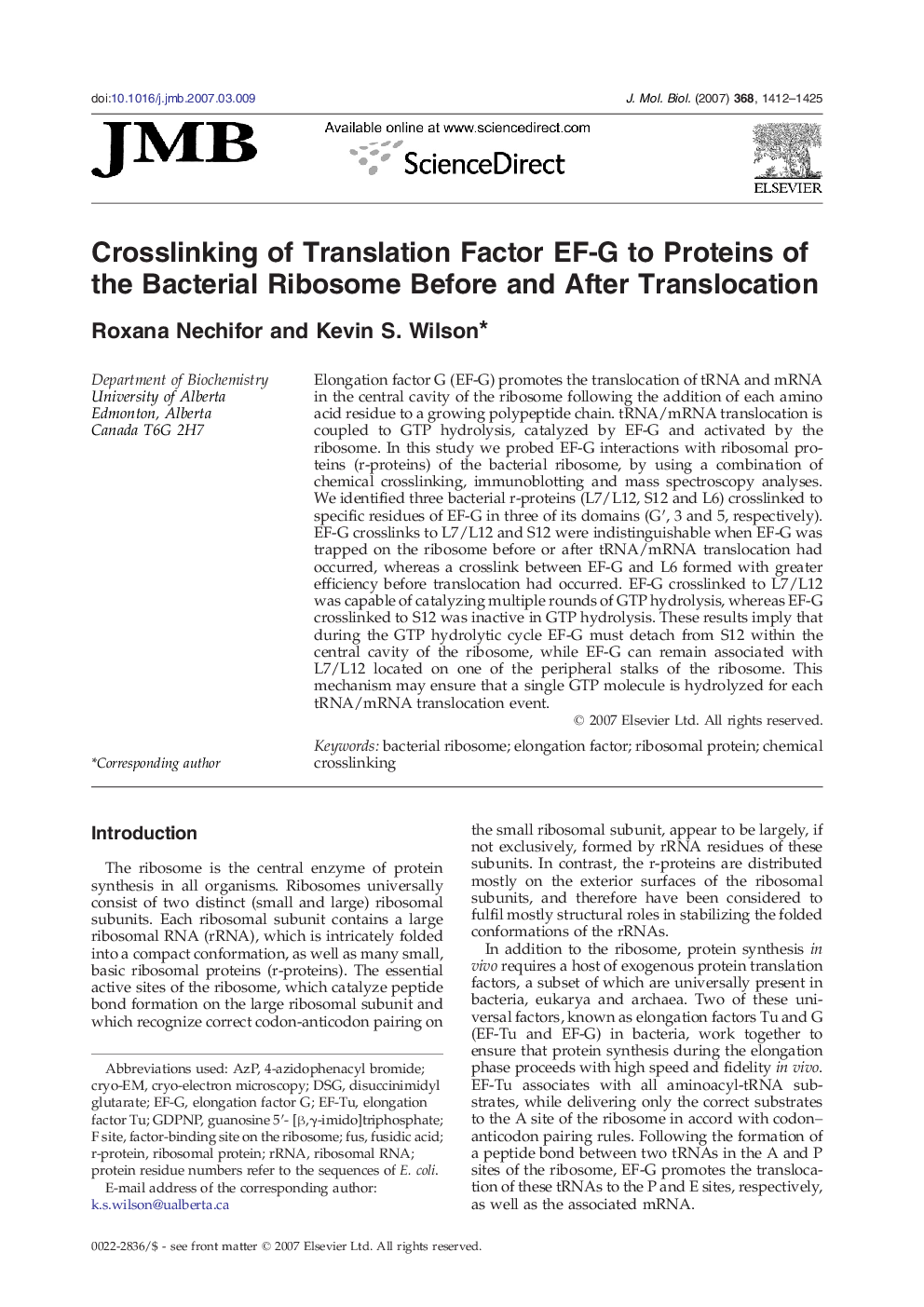| Article ID | Journal | Published Year | Pages | File Type |
|---|---|---|---|---|
| 2188489 | Journal of Molecular Biology | 2007 | 14 Pages |
Elongation factor G (EF-G) promotes the translocation of tRNA and mRNA in the central cavity of the ribosome following the addition of each amino acid residue to a growing polypeptide chain. tRNA/mRNA translocation is coupled to GTP hydrolysis, catalyzed by EF-G and activated by the ribosome. In this study we probed EF-G interactions with ribosomal proteins (r-proteins) of the bacterial ribosome, by using a combination of chemical crosslinking, immunoblotting and mass spectroscopy analyses. We identified three bacterial r-proteins (L7/L12, S12 and L6) crosslinked to specific residues of EF-G in three of its domains (G′, 3 and 5, respectively). EF-G crosslinks to L7/L12 and S12 were indistinguishable when EF-G was trapped on the ribosome before or after tRNA/mRNA translocation had occurred, whereas a crosslink between EF-G and L6 formed with greater efficiency before translocation had occurred. EF-G crosslinked to L7/L12 was capable of catalyzing multiple rounds of GTP hydrolysis, whereas EF-G crosslinked to S12 was inactive in GTP hydrolysis. These results imply that during the GTP hydrolytic cycle EF-G must detach from S12 within the central cavity of the ribosome, while EF-G can remain associated with L7/L12 located on one of the peripheral stalks of the ribosome. This mechanism may ensure that a single GTP molecule is hydrolyzed for each tRNA/mRNA translocation event.
